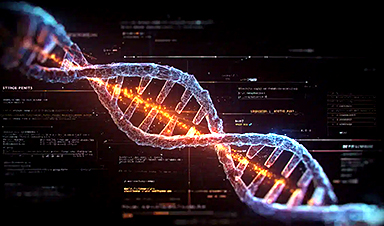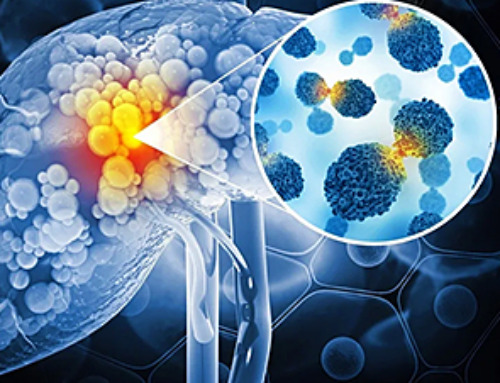Summary: Researchers have developed an AI-powered tool called chronODE that models how genes turn on and off during brain development. By combining mathematics, machine learning, and genomic data, the method identifies exact “switching points” that determine when genes reach maximum activity.
These findings reveal that most genes follow predictable activation patterns and can be classified into subtypes such as accelerators, switchers, and decelerators. The approach could eventually allow doctors to time gene therapies or drug interventions at the most effective moment.
Key Facts
- chronODE Tool: Uses math and AI to model real-time gene activation and chromatin changes.
- Switching Points: Identifies critical moments when intervention could alter disease progression.
- Gene Patterns: Reveals predictable categories of gene behavior during development.
Source: Yale
A Yale research team has created a new computer tool that can pinpoint when exactly genes turn on and off over time during brain development — a finding that may one day help doctors identify the optimal window to deploy gene therapy treatments.
Dubbed “chronODE,” the tool uses math and machine learning to model how gene activity and chromatin (the DNA and protein mix that forms chromosomes) patterns change over time. The tool may offer a variety of applications in disease modeling and basic genomic research and perhaps lead to future therapeutic uses.
“Basically, we have an equation that can determine the precise moment of gene activation, which may dictate important steps such as the transition from one developmental or disease stage to another,” said Mor Frank, a postdoctoral associate in the Department of Biophysics and Biochemistry in Yale’s Faculty of Arts and Sciences (FAS) and study co-author.
“Consequently, this may represent a potential way to identify, in the future, critical points for therapeutic intervention.”
Results of the study were published August 19 in the journal Nature Communications.
For the study, the research team wanted to determine not just when genes activate, but how their activation changes over the course of brain development. Genes activate at different points in cell development, but mapping gene development has been difficult. And past studies have focused on isolated moments in time, not on how gene expression evolves over time.
In this case, the researchers used a logistic equation (a mathematical equation useful for modeling dynamic processes) to measure when and how rapidly genes turn on and off in developing mouse brains.
They found that most genes follow simple and gradual activation patterns, and that genes can be grouped into subtypes, including accelerators that speed up during late stages of development; switchers that speed up and then slow down; and decelerators that just slow down.
Researchers then developed an AI model to predict gene expression over time based on changes in nearby chromatin. The model worked well, especially for genes with a more complex regulation, and the entire procedure established the chronODE method.
They found that most genes follow predictable developmental patterns, which are dictated by their role in a cell and determine how quickly they reach maximum influence on the cell.
“In a situation where you’re treating genetic disease, you’d want to shut down the gene before it reaches its full potential, after which it’s too late,” said co-author Beatrice Borsari, who is also a postdoctoral associate in biophysics and biochemistry.
“Our equation will tell you exactly the switching point — or the point of no return after which the drug will not have the same effect on the gene’s expression,” Borsari said.
“There are many cases where it’s not just important to characterize the developmental direction you go, but also how fast you reach a certain point, and that’s what this model is allowing us to do for the first time,” added Mark Gerstein, the Albert L. Williams Professor of Biomedical Informatics at Yale School of Medicine and a professor of molecular biophysics and biochemistry, computer science, and of statistics and data science in FAS, and the study’s lead author.
Borsari and Frank underscore that the potential applications in the pharmacokinetic area are major.
Researchers called their new method “chronODE,” a name that merges the concept of time (Chronos is the god of time in Greek mythology) with the mathematical framework of ordinary differential equations (ODEs.)
“We analyze time-series biological data using the logistic ODE,” Borsari said. “In a sense, the name captures the multidisciplinary nature of our research. We work where biology meets the beauty of math. We use mathematical models to describe and predict complex biological phenomena — in our case, temporal patterns in genomic data.”
Borsari is a computational biologist with expertise in genetics and bioinformatics, while Frank is a biomedical engineer with a strong foundation in machine learning and mathematics. “Our diverse skills create a highly synergistic collaboration, and we learn a lot from each other,” Borsari said.
Other study authors include research associates Eve S. Wattenberg, Ke Xu, Susanna X. Liu, and Xuezhu Yu.
News
Ultrasound-activated Nanoparticles Kill Liver Cancer and Activate Immune System
A new ultrasound-guided nanotherapy wipes out liver tumors while training the immune system to keep them from coming back. The study, published in Nano Today, introduces a biodegradable nanoparticle system that combines sonodynamic therapy and cell [...]
Magnetic nanoparticles that successfully navigate complex blood vessels may be ready for clinical trials
Every year, 12 million people worldwide suffer a stroke; many die or are permanently impaired. Currently, drugs are administered to dissolve the thrombus that blocks the blood vessel. These drugs spread throughout the entire [...]
Reviving Exhausted T Cells Sparks Powerful Cancer Tumor Elimination
Scientists have discovered how tumors secretly drain the energy from T cells—the immune system’s main cancer fighters—and how blocking that process can bring them back to life. The team found that cancer cells use [...]
Very low LDL-cholesterol correlates to fewer heart problems after stroke
Brigham and Women's Hospital's TIMI Study Group reports that in patients with prior ischemic stroke, very low achieved LDL-cholesterol correlated with fewer major adverse cardiovascular events and fewer recurrent strokes, without an apparent increase [...]
“Great Unified Microscope” Reveals Hidden Micro and Nano Worlds Inside Living Cells
University of Tokyo researchers have created a powerful new microscope that captures both forward- and back-scattered light at once, letting scientists see everything from large cell structures to tiny nanoscale particles in a single shot. Researchers [...]
Breakthrough Alzheimer’s Drug Has a Hidden Problem
Researchers in Japan found that although the Alzheimer’s drug lecanemab successfully removes amyloid plaques from the brain, it does not restore the brain’s waste-clearing system within the first few months of treatment. The study suggests that [...]
Concerning New Research Reveals Colon Cancer Is Skyrocketing in Adults Under 50
Colorectal cancer is striking younger adults at alarming rates, driven by lifestyle and genetic factors. Colorectal cancer (CRC) develops when abnormal cells grow uncontrollably in the colon or rectum, forming tumors that can eventually [...]
Scientists Discover a Natural, Non-Addictive Way To Block Pain That Could Replace Opioids
Scientists have discovered that the body can naturally dull pain through its own localized “benzodiazepine-like” peptides. A groundbreaking study led by a University of Leeds scientist has unveiled new insights into how the body manages pain, [...]
GLP-1 Drugs Like Ozempic Work, but New Research Reveals a Major Catch
Three new Cochrane reviews find evidence that GLP-1 drugs lead to clinically meaningful weight loss, though industry-funded studies raise concerns. Three new reviews from Cochrane have found that GLP-1 medications can lead to significant [...]
How a Palm-Sized Laser Could Change Medicine and Manufacturing
Researchers have developed an innovative and versatile system designed for a new generation of short-pulse lasers. Lasers that produce extremely short bursts of light are known for their remarkable precision, making them indispensable tools [...]
New nanoparticles stimulate the immune system to attack ovarian tumors
Cancer immunotherapy, which uses drugs that stimulate the body’s immune cells to attack tumors, is a promising approach to treating many types of cancer. However, it doesn’t work well for some tumors, including ovarian [...]
New Drug Kills Cancer 20,000x More Effectively With No Detectable Side Effects
By restructuring a common chemotherapy drug, scientists increased its potency by 20,000 times. In a significant step forward for cancer therapy, researchers at Northwestern University have redesigned the molecular structure of a well-known chemotherapy drug, greatly [...]
Lipid nanoparticles discovered that can deliver mRNA directly into heart muscle cells
Cardiovascular disease continues to be the leading cause of death worldwide. But advances in heart-failure therapeutics have stalled, largely due to the difficulty of delivering treatments at the cellular level. Now, a UC Berkeley-led [...]
The basic mechanisms of visual attention emerged over 500 million years ago, study suggests
The brain does not need its sophisticated cortex to interpret the visual world. A new study published in PLOS Biology demonstrates that a much older structure, the superior colliculus, contains the necessary circuitry to perform the [...]
AI Is Overheating. This New Technology Could Be the Fix
Engineers have developed a passive evaporative cooling membrane that dramatically improves heat removal for electronics and data centers Engineers at the University of California San Diego have created an innovative cooling system designed to greatly enhance [...]
New nanomedicine wipes out leukemia in animal study
In a promising advance for cancer treatment, Northwestern University scientists have re-engineered the molecular structure of a common chemotherapy drug, making it dramatically more soluble and effective and less toxic. In the new study, [...]





















